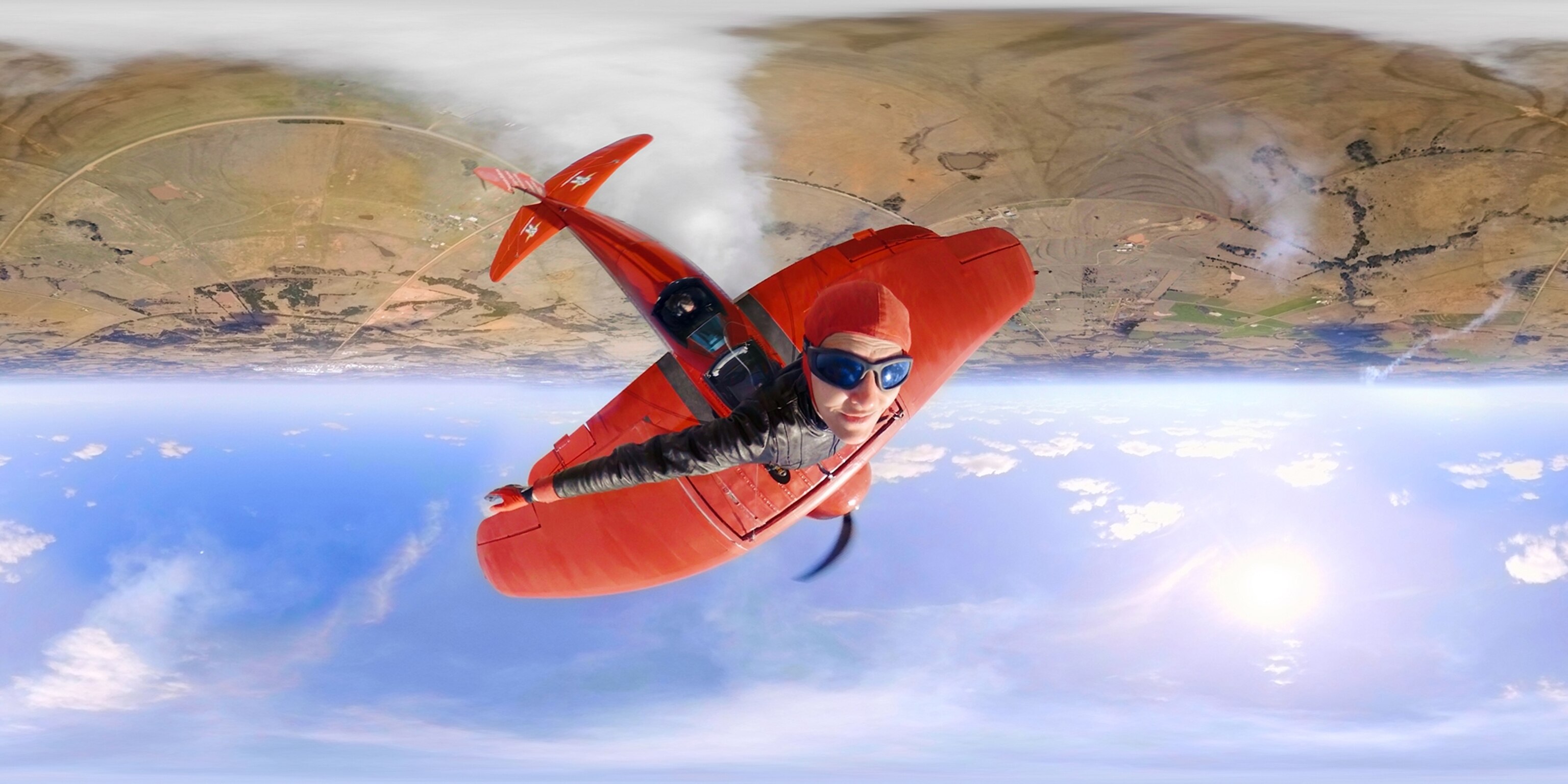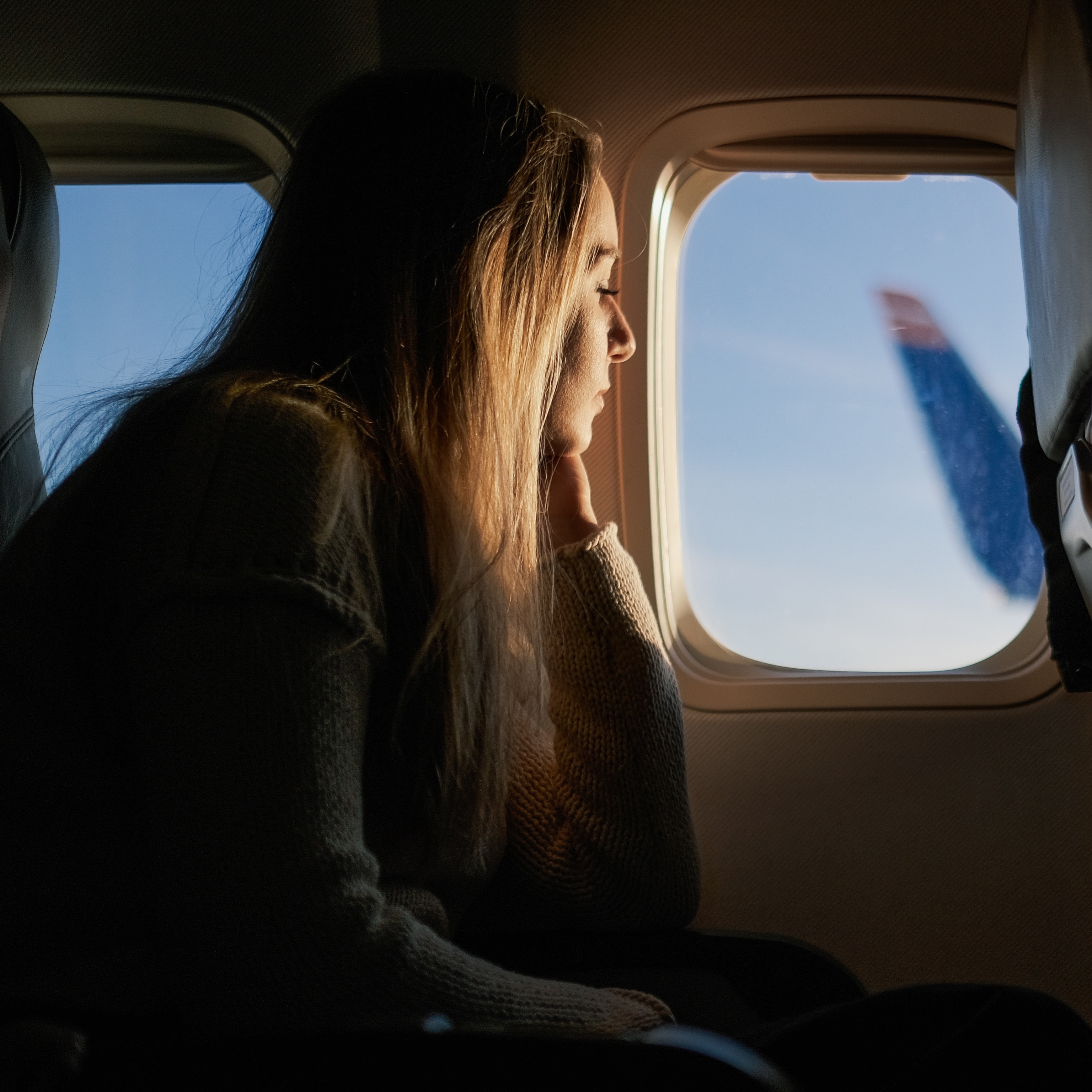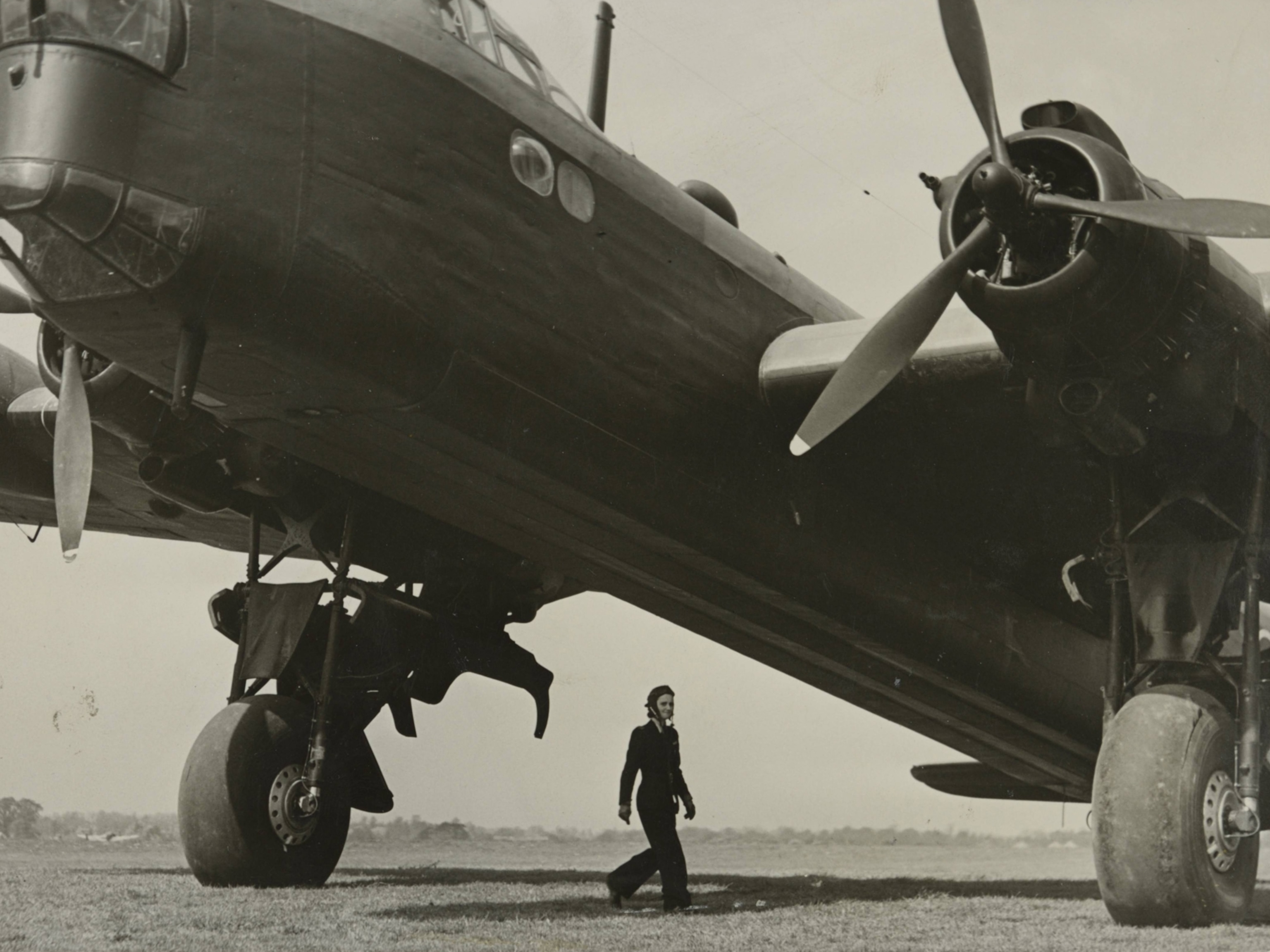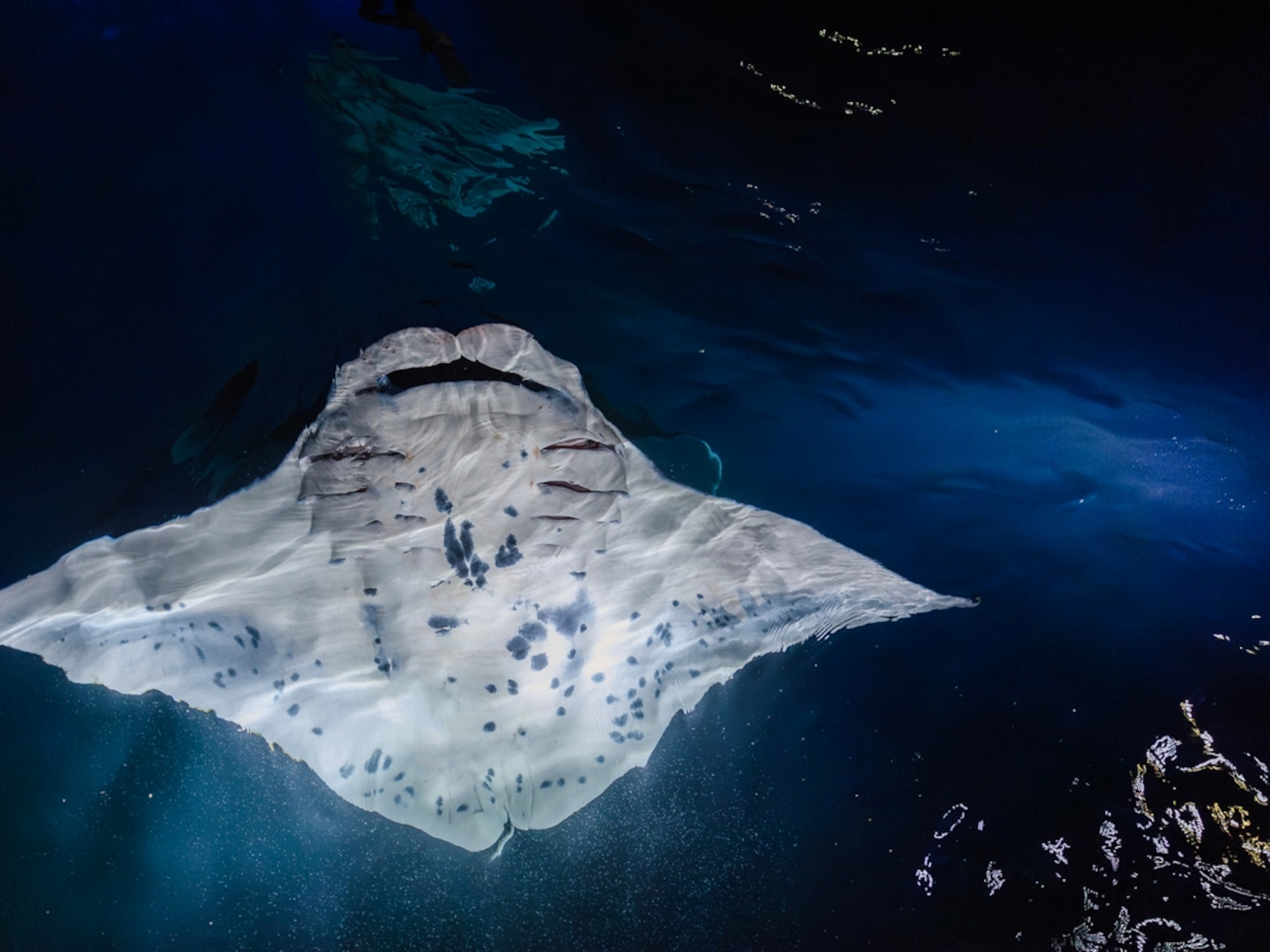
Wingwalker: 'Once You’ve Tasted Freedom, There’s No Giving It Back'
Wingwalker Carol Pilon performs breathtaking feats on vintage planes—and keeps a long tradition of airborne adventure alive.
Carol Pilon jumps onto the wing of a red vintage airplane and hangs on as it lifts off. Slowly and steadily, she switches from a horizontal position, with her body parallel to the plane’s cockpit, to standing atop the plane with the full brunt of the wind in her face. The only thing keeping her from falling into oblivion is her grip on a few wires strung between the top and bottom wings.
“I don’t view it as incredibly dangerous; I view it as incredibly challenging,” says Pilon, a professional wingwalker—one of only a handful in North America.
The art of moving about on the wing of a flying plane is almost as old as aviation itself. About a century ago, an army lieutenant named Ormer Locklear demonstrated (on a bet with his superiors) that his World War I aircraft could still fly while he operated a firearm on its wing. After that feat, he became an aeronautical stuntman and popularized barnstorming shows with performers walking on the wings of planes. Locklear died in a stunt accident in 1920, but wingwalking lived on.
In her 17 years as a pro, Pilon has achieved many firsts in her field. She was the first and only female wingwalker to perform on a jet-propelled aircraft, the first and only Canadian wingwalker (she’s based in Ste. Cécile de Masham, Quebec), and the first wingwalker to own and operate a team, Third Strike Wingwalking, in North America.
“A typical wingwalking team is a pilot who owns an airplane who hires a wingwalker,” Pilon explains. In her team, Pilon owns two aircraft, hires and trains the aerobatic pilots, and mentors and employs other wingwalkers, in addition to performing in air shows across North America and Europe. Pilon is also a Federal Aviation Administration-certified airframe technician.
National Geographic Adventure chatted with Pilon to learn more about her sport and to find out what’s going through her mind while she’s up in the air. (See part one and part two of National Geographic's 360-video with Pilon.)

You wanted to be a wingwalker after seeing a commercial for an air show on TV. How did you go from that point to actually doing it?
I was about 20, and that was the first time I had ever seen wingwalking. I saw the commercial and I just said, "No way is that a person walking around on an airplane." I just knew that that was going to be the rest of my life.
I had no idea what it would take to make that happen, but I stuck with it. It took me seven years of begging, pleading, and downright stalking every wingwalking team in North America before I got up on a wing.
The problem is that it’s inherently quite dangerous, but it has nothing to do with me falling off. The danger comes from me destroying the airplane accidentally or the airplane itself having a mechanical problem—these are old aircraft. It takes time for people to get used to you; they’re not going to let just anybody up on their airplane, because they are taking a huge risk. It’s very hard to break into, [but] I finally got a ride on the airplane that you see in [the National Geographic] video. I ended up buying the first plane I ever walked on.
On the heels of that experience I approached Franklin’s Flying Circus, who was at that point looking for a new wingwalker. That’s where I got the bulk of my education, tutelage, and mentorship.
How did you learn to do the routines?
The way you learn is by walking on the airplane while it’s grounded. You’re expected to repeat the same maneuver for 12 hours a day for about two days to ingrain muscle memory. The first time you’re up in the air, you get overwhelmed. Your senses just get soft, and the wind is louder than the engine—it’s just howling at you. Your body knows what to do, and that’s the initial step. Then you’re on your way to being able to learn the rest. It’s 17 years later for me, and I’m not anywhere close to being done learning.
In the National Geographic video, you grab on to a succession of handholds while you’re standing on the wing. What’s actually going on out there?
The art of wingwalking involves traversing that lower wing and repositioning yourself upstairs, coming back down and going to the bottom wing, and sometimes moving about the airplane. There are two lockdown positions in my repertoire. One is where I’m lying down on the javelin, where I’m hooked onto flying wires and I’ve got a piece of wood—that’s a javelin—sustaining my body on the wing brace. The other is upstairs in the stanchions. Any time I’m not in one of those two lockdown positions, I’m moving about the airplane, and that is actually the wingwalking portion of the routine.
Is it scary? It sounds scary.
It’s awesomely fun. A lot of people think it’s a rush, but I’ve never once gotten a rush out of wingwalking. It has always been about focus, about concentration, and the pursuit of excellence for me. It just speaks to me for some reason; it’s just what I’m supposed to be doing.
How fast is the plane flying while you’re walking?
My plane right now has a max speed—or what we call a VNE, or “do not exceed” speed—of 187 miles an hour. I regularly do 140 to 160 miles an hour when we’re diving for aerobatic maneuvers. The original aircraft had a max speed of 65 miles an hour, so that’s a big gap. Once I even wingwalked on a biplane that was equipped with a jet for a time, so we could do 200 miles an hour straight up, straight down, sideways, it didn’t matter—we had the turbo underneath it. But 200 is where I top out—things get pretty nasty after that.
When you’re up there and focused on your position, what’s going through your mind?
- National Geographic Expeditions
It’s so great—nothing! And that’s what makes it so incredible. The only thing I need to be concerned about at that moment in time is, What’s my next handhold? What’s my next foothold? Do I have a secure grip before I let go of the other thing I’m holding on to? My world becomes super, supersimple.
I mean, you’re also looking for other things when you’re doing shows. You’re gauging where you are in the routine. You’re checking in with your pilot to make sure everything’s still copacetic. You’re scanning the horizon to make sure a bird isn’t coming at you. But that’s the kind of stuff that’s all happening in the periphery. The only thing that’s happening in the center of all that is next handhold, next foothold. There’s a lot riding on that next handhold!
What do you love most about wingwalking?
The freedom. It’s not just freedom like, I’m soaring through the air, it’s the freedom of, I’m ultimately responsible for my own survival. Once you’ve tasted that kind of freedom, there’s just no giving it back. It’s empowering. It’s human triumph over adversity and being willing to put yourself out there in that environment and challenging yourself to that degree.
What’s next for you?
The biggest issue is that the wingwalking industry is so incredibly competitive that it doesn’t foster [mentorship] to a huge degree. I want to build an industry where we can go out and share our art in a noncompetitive way. I want to change the face of air shows. I hope to have 20 wingwalkers working for me, which would be more than are working in the entire world right now. They’d have a place where they could freely teach each other and actually earn a living from this. I want to create a world where wingwalking can thrive.
My goal is to, through performances, try to educate people about aviation, to make them see that there’s a different side to aviation that’s not about wars or destruction; it can be about happiness and joy. I hope to be able to inspire someone to go out and follow the passion that’s in their heart.







